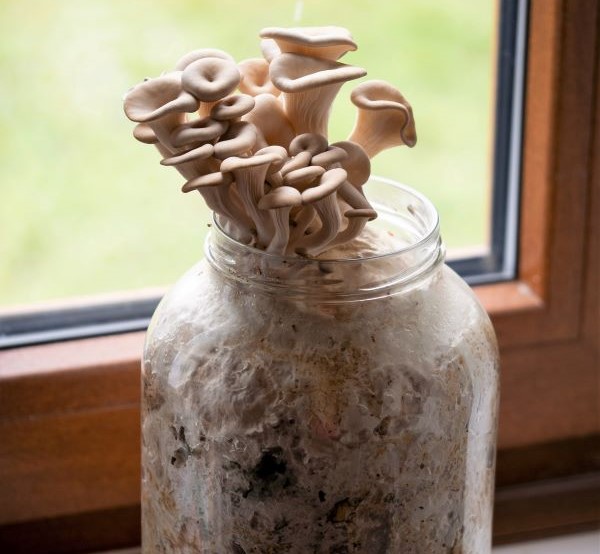
How To Grow and Cook With Mushrooms at Home
Choosing the right food to put in your body requires deep thought and thorough research. Between the food’s nutritional value, sustainability of the resource, and the environmental impacts of farming it, it is an ambitious endeavor to truly understand and feel good about what we’re eating.
But there is one glaring opportunity to get to know our food … growing it ourselves! When we grow our own food, we become more in control and aware of the growing process and are therefore more confident in it.
And there’s one food that makes it particularly easy for us to grow and enjoy: mushrooms.
Mushrooms, Meet Meat
The emergence of mushrooms as a meat alternative in restaurants and home kitchens is auspicious. They can reduce the scope of environmentally harmful animal farming practices in the U.S.
Animal agriculture contributes almost a third of annual anthropogenic global greenhouse gas emissions and a leading cause of deforestation, water and air pollution, and biodiversity loss.
These problems can be overwhelming if we feel like there’s nothing we can do. But with access to at-home farming resources, we can make changes that benefit us individually and at a societal level.
Mushroom farming, in contrast to animal agriculture, requires little space, time, and resources to do.
How Nutritional Are Mushrooms?
While mushrooms cannot compete with the protein in meat, they do offer a wide range of vitamins and minerals including selenium, zinc, vitamin B1, B2, B5, B6, and B12. And similarly to humans, mushrooms produce Vitamin D as a result of sun exposure, so they will contain this nutritional benefit that no other vegetable can offer.
To make up for the reduction in protein that comes with replacing meat with mushrooms, be sure to add vegetarian proteins — such as legumes, responsibly produced soy, and nuts — to your diet.
Starting a Mushroom Farm
Mushrooms require a cool, dark, damp environment and a few inexpensive materials to grow. Many DIY mushroom kits are available for beginners and those who want an all-inclusive package. Midwest Grow Kits offer comprehensive kits and expert guidance to guide you through the mushroom growing process.
And for others who are more experienced or adventurous, there are a number of common household items that can meet the bulk of your mushroom growing needs. Keep reading to learn what these items are and how you can use them.

The Seed and Soil of Mushroom Growing
To grow mushrooms, you’ll just need mushroom spores or liquid cultures, a growing medium (substrate), a container for the mushrooms to grow in, and sanitizing/hygienic products to keep the process sterile. Spores and liquid culture syringes are both vessels for inoculating the substrate.
Spores are the fungi parallel to seeds for plants. Like seeds, the type of spore or liquid culture will determine the species of mushroom grown, so you can grow any kind of mushroom you’d like. Liquid cultures are the result of an isolated mycelium culture that is grown and expanded in a sugar broth. They are becoming increasingly popular with mushroom growers as they result in more consistent mushroom production. Contamination can be in the form of mold or bacteria and can be fatal to the mushroom in its growth process. You can purchase liquid cultures on Amazon or a number of mushroom-specific stores like Foraged or Mycolabs.
The substrate you choose will provide nutrition for the mushrooms and can be any of a number of materials — including coffee grounds, cardboard, straw, and sawdust — that might otherwise go to waste. The substrate goes in a container such as a box, bag, or jar with the amount of spore or liquid culture designated by the instructions on your grow kit.
Growing the Mushrooms
The mushrooms first lay down mycelium, a white fluffy material that will begin to cover the substrate and serve as the root system for the mushrooms. The mushrooms will start fruiting once the mycelium is fully colonized.
A wonderfully sustainable aspect of mushroom farming is that whatever is not utilized in the growing process can be turned into compost. Mushroom farming is a zero-waste circular process that requires minimal resources, a rarity in modern agriculture.

Recipes for Health and Planet
Now for the most important question, how are you going to cook them? Mushrooms have a deeply savory flavor. And their chewy texture easily absorbs ingredients like olive oil, butter, and a slew of spices. Sautee your mushrooms with butter, rosemary, parsley, parmesan cheese, and garlic. Add some pasta for a rich, healthy, filling meal.
Or take a more appetizer-oriented route with mini stuffed mushrooms. Their bowl-like shapes make mushrooms the ideal vessel for toppings! Combining breadcrumbs with cream cheese and spices will create a perfectly balanced flavor that will be complete after baking in the mushrooms for just 20 minutes.
Incorporating mushrooms, home-grown or otherwise, into your diet is a step towards a more sustainable and equitable food system.
So go grab your materials and get growing.
About the Author
Miranda is a freelance content creator with a focus on environmental education and sustainability in food systems. As a digital nomad, much of her work is travel-centric. She seeks to better understand and elevate the sustainable solutions that are being cultivated globally and does this through her skills as a writer, photographer, and videographer.